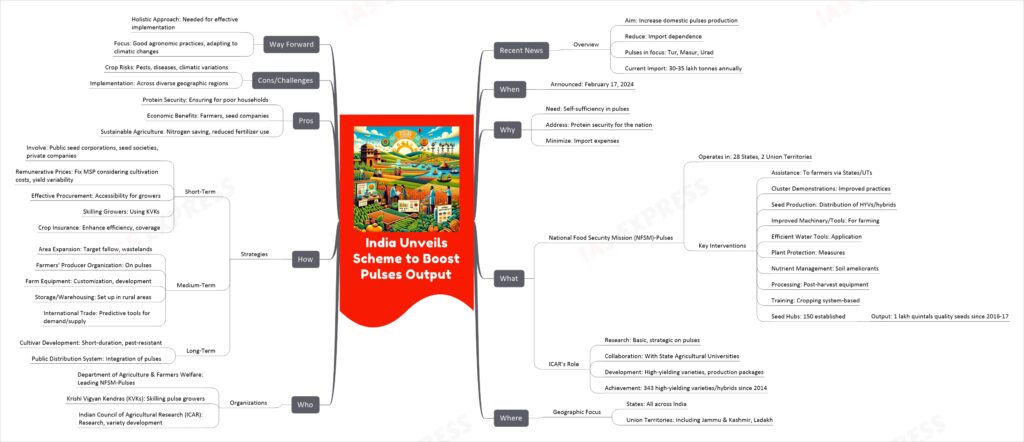India Unveils Scheme to Boost Pulses Output

This scheme is an ambitious step towards enhancing India’s pulses production, leveraging various strategic approaches from short-term to long-term. The involvement of key organizations like the Department of Agriculture & Farmers Welfare, Krishi Vigyan Kendras, and the Indian Council of Agricultural Research highlights the scheme’s comprehensive nature. It aims to address the challenges of protein security, economic development, and sustainable agriculture practices in India.
In summary, India’s scheme to boost pulses output is a multi-faceted initiative aiming to enhance domestic production of pulses such as tur, masur, and urad. By involving a range of stakeholders and employing various strategies, the scheme seeks to reduce import dependence, ensure protein security, and promote sustainable agricultural practices.
If you like this post, please share your feedback in the comments section below so that we will upload more posts like this.

